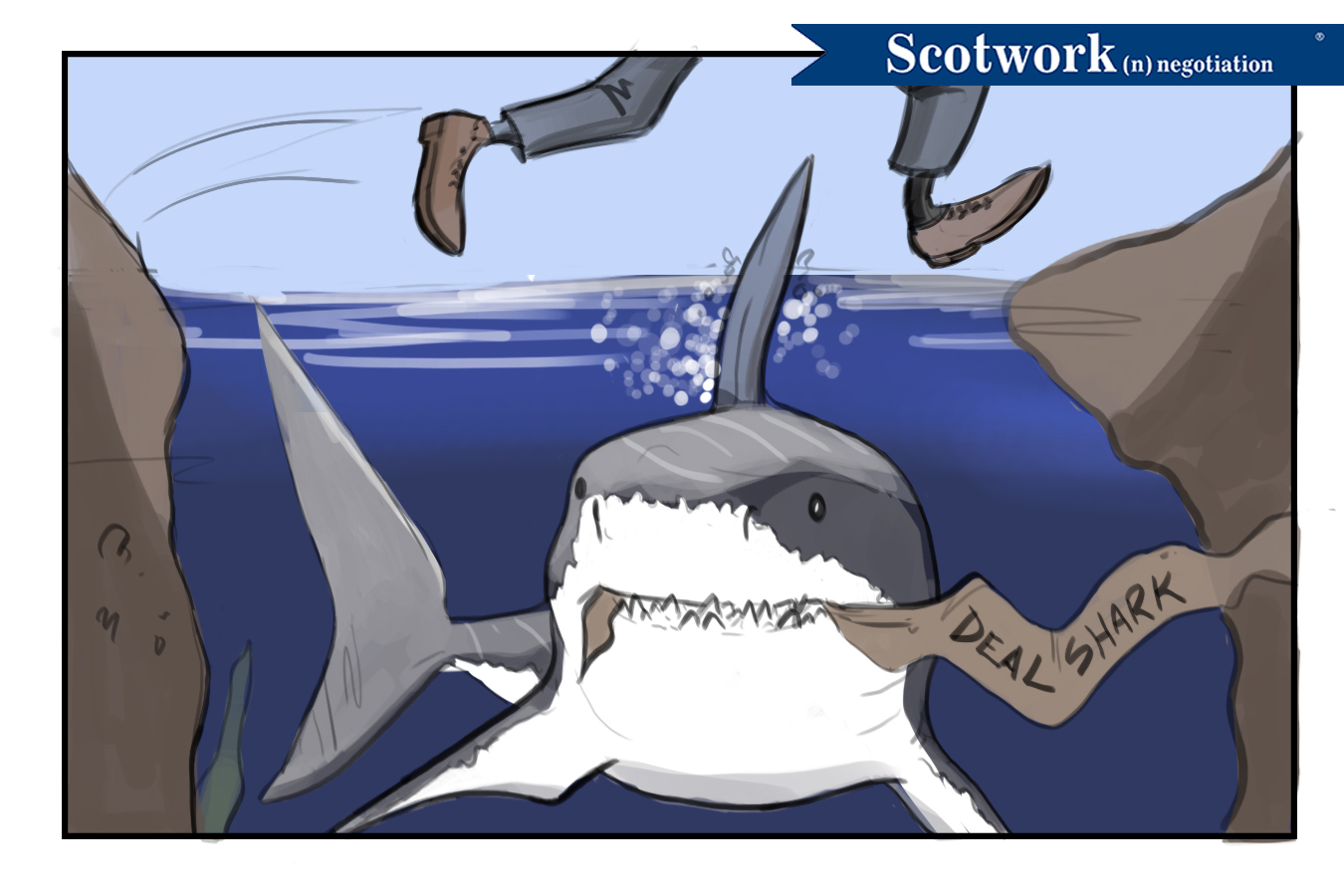My client was sharing with me a negotiation he was involved in that was, as he put it, “jump the shark” worthy. He was very enthusiastic about it. In fact, he was hopeful that it was going to lead to more opportunities for him. He said his client thought the negotiation was “jump the shark” worthy too. As I listened to his positivity and enthusiasm, I started to realize that his definition of “jump the shark” is very different from mine. Quoting Inigo Montoya from The Princess Bride, I told him, “I don’t think that phrase means what you think it means.” A panicked expression came across his face as he realized what it meant for his negotiation, and he quickly transitioned into techniques for avoiding the sharks altogether.
First, let’s define “jumping the shark.” After talking to my client, I realized that the phrase is a generational cultural reference that not everyone understands. “Jumping the shark” is the moment when something that was once popular is no longer popular or starts to decline in popularity. In other words, it’s past its peak. This was popularized by the ’70s TV series Happy Days in an episode where a waterskiing Fonzie answers a challenge to his bravery by wearing swim trunks with his trademark leather jacket and jumping over a confined shark. Many point to that episode as the watershed for Happy Days, leading to its eventual downfall. (Ironically, the sitcom ran for another seven years after Fonzie’s waterskiing escapades.)
Back to my client’s panic. He had understood “jumping the shark” as referring to someone who has the bravery and fortitude to do something bold in order to overcome a challenge. As it applied to his negotiation, he was excited that he had some fresh ideas on the table that he felt were really driving the conversation in new directions. He was also convinced that his innovation would lead to greater opportunities down the road. Now that he understood the common meaning of the phrase, he started to wonder if his client was on the same page as he was.
Being misaligned during the dealmaking process has many implications. Some are obvious while others are more subtle. The obvious indication of a misalignment issue is when both parties have completely different goals or desired outcomes. This can create significant hurdles that may even prevent deals from moving forward. The more subtle indication is when there are assumed understandings about how something is going to be executed, which can lead to issues post-contract. If you’ve ever had a conversation with someone over the “spirit of the agreement,” that’s probably an indicator that you had a misalignment during the negotiation.
After having dealt with a variety of misalignment issues throughout my career, I do my best to eradicate them before they can manifest in any number of ways. Here’s how:
- Define shared goals for your deal. While each party will have what they want to achieve individually, I find it very useful to also define a common objective. This helps to keep the conversation grounded.
- Create a deal dictionary. Every business has its own language. As you go through your deal, document and define the unshared language. This will help to avoid confusion when either party starts speaking their own language.
- When in doubt, ask. I’d rather ask clarifying questions during the dealmaking process than have something I didn’t fully understand blow up into a much larger issue later on down the road.
- Regularly summarize and document. The more complex the deal, the longer it will take and the more issues that will have to be addressed. Therefore, regularly summarizing what’s been discussed and keeping a record of those notes will ensure that nothing slips through the cracks.
All of the above has helped to minimize misalignment. More importantly, it helps to ensure that the deal gets executed exactly how you envisioned it during the negotiation process.
As it turns out, my client’s suspicions were correct: He and his client were misaligned. His client said that the deal had “jumped the shark” because he was losing support for it internally. My client had missed a few cues around the lack of internal support and assumed everything was great. Once my client was able to dissect the issues and get alignment on desired outcomes, he was able to turn his “boat” around to avoid making the “jump.”
Avoid the Sharks
Sharks abound. We can help you avoid them. We can be your advisor, your coach, and your trainer. Whether you bring us in to create your strategy, or help you prepare, or develop your team’s negotiating skills - we can help you win at the negotiating table.
We’ve been consulting and teaching our proven negotiation methodology for over 40 years. We know the process, we can identify the skills required, and we have the techniques to negotiate better deals for you. Call us and let’s discuss what we might be able to do for you.
Talk to one of our experts today.

